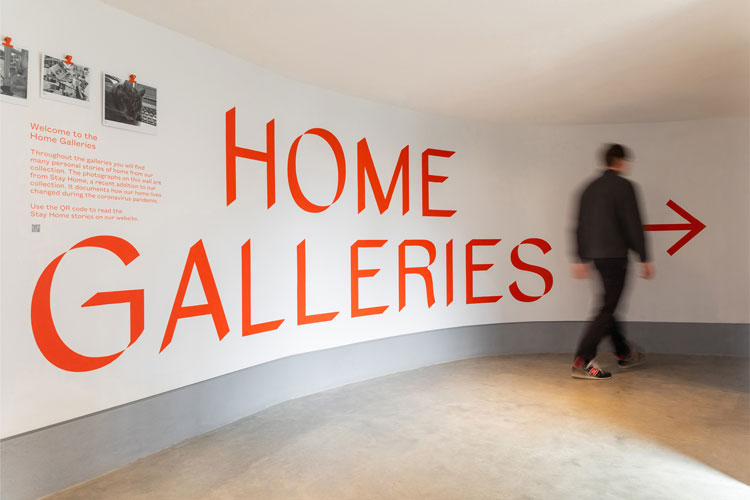Museum of the Home’s new wayfinding system pays tribute to a staple domestic material

by IBRAHIM
Museum of the Home’s new wayfinding system pays tribute to a staple domestic material
The work for the Grade I listed space builds on Dn&co’s previous identity update for the museum in 2019.
Dn&co has designed the new wayfinding system for London’s Museum of the Home, combining enamel signage with a bespoke typeface.
In 2019 London consultancy Dn&co rebranded the museum, formerly known as Geffrye Museum of the Home, which explores the history of domestic spaces. The East London museum is set within old 18th century almshouses; the space was recently redesigned by architectural firm Wright & Wright, also based in London.

Dn&co collaborated with wayfinding consultancy All Points West on the new system, working on wayfinding strategy, design and production.
The challenge was to respect the building’s heritage as well as the updated interiors which include a new gallery and entrance, explains Dn&co creative director Patrick Eley. The museum gardens have also been redesigned to house two new studios, which meant the design team had to consider external conditions as well as internal ones.
“We needed to create a system that could survive the British weather, as well as the more controlled spaces of the galleries,” Eley says.

The building’s Grade I listed status did prohibit some changes – the team was not allowed to add signs to the museum’s railings on Kingsland Road, for example. Other practical considerations included not drilling into the building’s original brickwork, Eley explains.
The team looked to enamel as their material choice. Thanks to its magnetic nature (the base material is mild steel), the signs can be set up and changed easily and without the museum using Blu Tack or Sellotape, according to Eley. It has been paired with oak, another material frequently used in domestic spaces.

Enamel also made thematic sense for the site, explains Dn&co wayfinding director Zoë Barrett. “It was only right that we reflected the domestic nature of the spaces, while making sure things could withstand hundreds of visitors over the coming years,” she says. Enamel is used not only in domestic spaces (on items like bathtubs) but also across the city, Barrett explains, citing London Tube and street signs.
The system’s poppy red colour is a reference to the museum’s red bricks, and provides a consistency across the museum’s spaces, according to Barrett. “It’s particularly noticeable in the gardens, for example and really jumps out from the greenery,” she adds.

There were some practical difficulties with enamel however. The specific shade of red pigment is a carcinogen and has to be applied under “strict ventilation conditions” before it’s fired, Barrett says. The colour also had to be sprayed in one go so that there were not variations in shade, she adds.
The typeface used is Home Sans, a bespoke design created in collaboration with Colophon Foundry. When Dn&co crafted the new visual identity for the museum in 2019, it was inspired by the idea of light – “our idea of home has always been defined by it, from fires to candles to electric light,” says Patrick Eley. Typography was crucial in conveying that theme, he explains, playing with the “notion of light and shadow”.

The “two-axis variable font” lets the team create a “variety of compatible and opposing expressions”, says Eley. Lighter uses of the font provide a “delicate sensitivity” while bolder variations appear “calligraphic”, he adds. The range of styles is also useful for different applications and communications, according to Eley, from varying tone of voice to diverse events and exhibitions.
On the signage, the typography has been screen printed and then fired with a slight raise, which has resulted in a “tactile presence and wonderfully, a slight shadow”, Eley says. In total, the wayfinding system includes 130 internal and external signs throughout the museum and a ner series of icons.
Recommended Posts

NB invites local designers centre stage for Vineyard Theatre rebrand
February 24, 2023

“AI revolution” will change way design studios look within three years
February 24, 2023

Rbl rebrands ZSL with ecosystem-inspired identity
February 23, 2023

